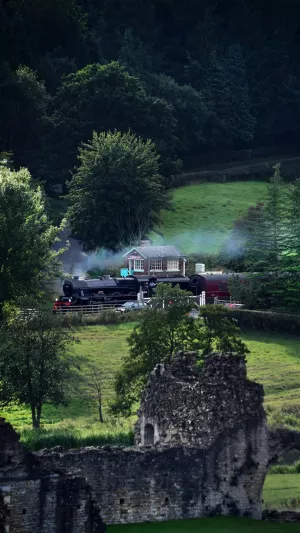Steam trains, also called steam locomotives, are the earliest and oldest trains powered by coal and centered on steam engines.
The appearance and function of steam trains are far from the various trains of today. As the first train in the world, it used coal to heat water, turning the water into steam, which then pushed the piston to make the train run.
A steam locomotive is a type of train that utilizes a steam engine to convert fuel's chemical energy into heat energy, which in turn is converted into mechanical energy to power the locomotive. George Stephenson, an Englishman, invented and operated the first steam locomotive in 1814. Since then, mankind has accelerated the pace of entering the industrial age. The steam locomotive became an important symbol and key tool of cultural and social progress in this era.
In 1814, the first steam locomotive "Bratzer" developed by him was successfully tested. On September 27, 1825, Stephenson personally drove the "Voyager" steam locomotive, which was designed and manufactured in cooperation with others, to test and run on the newly laid railway and achieved success. The application of the steam engine in the transportation industry brought mankind into the "train age" and rapidly expanded the scope of human activities.
Stephenson's manufacturing of steam locomotives has had a profound impact on the future of steam locomotive manufacturing both in terms of principle and functional design. Afterward, the concepts of railways and steam locomotives, like the current Internet, quickly spread to all progressive countries in the world and each developed a different style.
Steam locomotives have been criticized for their low thermal efficiency, which has negative implications for energy conservation and environmental protection. Additionally, the unstable boilers of these locomotives also pose a risk of boiler explosions. An example of such an incident occurred in 1995, when a steam locomotive operated by the Gettysburg Passenger Transport in Pennsylvania, USA, exploded, resulting in serious burns for three passengers who were lucky enough to survive.
Steam locomotives began to be replaced by diesel locomotives or electric locomotives in the middle of the 20th century due to lower power efficiency and to reduce air pollution. At the end of the 1960s, there were very few countries that still used steam locomotives for commercial operations.
By the end of the 20th century, steam locomotives had been eliminated in North America and Europe, and only occasionally traveled on routes specially arranged for railway fans and tourists. A small number of steam locomotives still operate in remote locations in Mexico. India used to utilize steam locomotives extensively, but now they only operate in mountainous areas where the air is thin.
Today, steam locomotives are still used for traction in some mining railways with poor conditions. Some steam locomotives are specially preserved and continue to operate due to sightseeing, historical preservation, or other reasons. This is mainly to satisfy the travel of residents while taking into account tourism. It can be said that the steam locomotive has gradually withdrawn from the stage of history.





